#Smoking Cessation Programs
Text
Effective Strategies to Quit Smoking for Good
Effective Strategies to Quit Smoking for Good
Introduction to Quitting Smoking
Quitting smoking is a journey that leads to a healthier life. It’s not always easy, but with the right strategies, it’s definitely achievable. Smoking can harm nearly every organ in the body, and finding the motivation to quit is the first step towards a smoke-free life.
The harmful effects of smoking on…
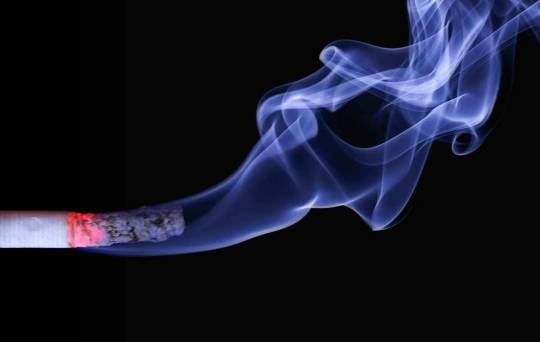
View On WordPress
#Benefits of quitting smoking#Best way to quit smoking#Effects of quitting smoking#Help to stop smoking#How to quit smoking#Natural ways to quit smoking#Nicotine gum for quitting smoking#Nicotine patches#Quit smoking#Quit smoking acupuncture#Quit smoking apps#Quit smoking calculator#Quit smoking cold turkey#Quit smoking hypnosis#Quit smoking motivational quotes#Quit smoking support groups#Quit smoking timeline#QuitSmoking#QuitSmokingTips#Smoking cessation programs#SmokingCessation#Stop smoking aids#Stop smoking medication#StopSmoking#Tips to quit smoking
0 notes
Text
The Silent Threat: How Smoking And Overwork Combine To Increase Stroke Risk
Are you aware of the silent threat lurking in the shadows of modern life, increasing the risk of a debilitating stroke? Could the combination of smoking and overwork be putting you on a dangerous path? In this comprehensive blog, we'll delve into the effects of smoking, the best ways to quit smoking, and how the twin demons of smoking and overwork can amplify the risk of a stroke. Join us as we explore the negative effects of quitting smoking, the benefits of stopping this deadly habit, and much more. So, let's start with a burning question: How can smoking and overwork harm your health?
#effects of smoking#best way to stop smoking#smoking health risks#quit smoking aids#quit smoking medication#negative effects of quitting smoking#nicotine gum#ways to quit smoking cigarettes#easiest way to quit smoking#smoking cessation programs#quit smoking products#smoking causes#dangers of smoking#smoking side effects#benefits of stopping smoking#reasons why smoking is bad#online consultation doctor#consult a healthcare professional
0 notes
Text
Smoking cessation programs
When the hypnotherapist is satisfied that the client is in hypnosis he then introduces powerful suggestions and visualizations into the focused mind of the client – carefully crafted so that the client can achieve their stated goals. Smoking cessation programs

0 notes
Text
Smoking Cessation Clinic an Effective Treatment for Smokers.
Smoking addiction is harmful equivalent to a person facing any chronic disease since it also causes vast health issues such as lung cancer, throat cancer, respiratory, and majorly liver issues. Therefore, we have observed that smokers also get irritated with this issue as it wastes lots of money and distracts them from concentrating on daily activities. They also look for an effective and easy way to quiet their smoking, but all take lots of hassles and unstrategic ways. However, it is found that many smokers found Smoking Cessation Clinic an Easy and Effective Treatment.
A smoking cessation clinic can be a simple and successful technique to address tobacco addiction and usage. This offers smokers the most intense treatment available, resulting in quitting smoking. Several tactics and methods, as well as some products, are available to help smokers quit smoking. Nicotine e-cigarettes, liquid nicotine, and nicotine pods are examples of these. In order to Quit Smoking Hypnosis, there is a staff who assists and provides proper consultancy. The clinic also provides nicotine prescriptions that healthcare professionals only provide.
Joy leaf is a leading player in the market that has successfully treated those who were getting addicted to nicotine. Our professionals helped the people to get out of this situation and live better lives along with a proper focus on daily activities. We also provide nicotine cessation products such as e-cigarettes, liquid, and pods which are really effective for the patients. Moreover, our consultancy also benefits many people, and our methods help to erase the craving for smoking.
#Joy Leaf Dispensary#Quit Smoking Hypnosis#Smoking Cessation Programs#Quit Smoking Methods#Smoking Cessation Tips#Smoking Control#Methods for Smoking Cessation
0 notes
Text

Many people are scared of what stopping smoking will do to them. What occurs after three days without smoking? Or perhaps a week or a month?
We now turn our focus to the Quitting Smoking Timeline, which features some amazing statistics about recovering better health, to gain a deeper understanding of what happens to the body when a person quits smoking.
#Quitting Smoking Timeline#Benefits Of Quitting Smoking#Ways To Quit Smoking#Smoking Cessation Programs#Best Quit Smoking App#Stop Smoking Hypnosis#Quit Smoking Hypnosis
1 note
·
View note
Text
Really need to be the butch community's mom here for a second. 🗣️ SMOKING IS BAD FOR YOU!!!!!! 🗣️
Sure, it looks cool now, but you know what isn't? Cancer, COPD, and that nasty, phlegmy cough you're gonna get in a few years from putting that shit in your lungs. It also smells bad and makes your teeth yellow, and the second hand smoke can hurt people around you, especially little kids and the elderly.
Go quit before I have to cry at your damn grave.
#I've been noticing this a lot more lately among butches and mascs in their 20's#take care of yourselves please there's already so much violence and harm directed at us don't contribute to it#make good choices for yourselves#there's smoking cessation programs out there that are often free if you're looking for help#smoking#lesbian community#butch lesbian#butch#masc#masc lesbian#wlw#mine
18 notes
·
View notes
Text
H & O Clinical PLLC

Website: https://www.hoclinical.com
Address: 2025 Central Park Avenue, STE 203, Yonkers, NY 10710 and 10 North Wood Avenue, STE B2, Linden, New Jersey 07036, USA
H & O Clinical PLLC specializes in telehealth services, offering a comprehensive range of medical solutions including family medicine, mental health services, and various health tests. With a focus on virtual consultations and a commitment to personalized care, they cater to non-emergent symptoms and chronic disease management. Their services extend to weight loss programs, medication management, and more, ensuring accessible and quality healthcare for all.
Keywords:
Telehealth services
Online ADHD treatment
Virtual healthcare
Online weight loss programs
Hormone replacement therapy online
Telehealth services near me
Hair loss treatment online
UTI telemedicine
Women's health telehealth
Family medicine online
Sinus infection telemedicine
Smoking cessation telehealth
Telehealth for high blood pressure
Virtual healthcare near me
Telehealth medication refill
Diabetes management online
Telemedicine for anxiety and depression
mental health teleconsultation
non emergent symptom treatment
chronic disease telemanagement
virtual health tests
teleconsultation for asthma
womens health telehealth
mens health virtual care
std teleconsultation
a1c blood sugar testing online
cholesterol management telehealth
telehealth for acid reflux
hypothyroidism online treatment
erectile dysfunction teleconsultation
premature ejaculation online help
birth control teleconsultation
addiction medicine teleconsultation
online telehealth services usa
virtual healthcare solutions arizona
mental health teleconsultation california
family medicine online colorado
non emergent symptom treatment connecticut
chronic disease telemanagement delaware
online weight loss programs district of columbia
telehealth medication refill florida
virtual health tests georgia
telemedicine for anxiety and depression idaho
online adhd treatment iowa
telehealth for high blood pressure kansas
diabetes management online maine
teleconsultation for asthma maryland
sinus infection telemedicine montana
womens health telehealth nevada
mens health virtual care new hampshire
std teleconsultation new jersey
a1c blood sugar testing online new mexico
cholesterol management telehealth new york
telehealth services arizona
virtual healthcare california
mental health teleconsultation colorado
family medicine online connecticut
non emergent symptom treatment delaware
chronic disease telemanagement district of columbia
online weight loss programs florida
telehealth medication refill georgia
virtual health tests idaho
telemedicine for anxiety and depression iowa
online adhd treatment kansas
telehealth for high blood pressure maine
diabetes management online maryland
teleconsultation for asthma montana
sinus infection telemedicine nevada
womens health telehealth new hampshire
mens health virtual care new jersey
std teleconsultation new mexico
a1c blood sugar testing online new york
cholesterol management telehealth oregon
mental health teleconsultation near me
family medicine online near me
non emergent symptom treatment near me
chronic disease telemanagement near me
online weight loss programs near me
telehealth medication refill near me
virtual health tests near me
telemedicine for anxiety and depression near me
online adhd treatment near me
telehealth for high blood pressure near me
diabetes management online near me
teleconsultation for asthma near me
sinus infection telemedicine near me
#Telehealth services#Online ADHD treatment#Virtual healthcare#Online weight loss programs#Hormone replacement therapy online#Telehealth services near me#Hair loss treatment online#UTI telemedicine#Women's health telehealth#Family medicine online#Sinus infection telemedicine#Smoking cessation telehealth#Telehealth for high blood pressure#Virtual healthcare near me#Telehealth medication refill#Diabetes management online#Telemedicine for anxiety and depression#mental health teleconsultation#non emergent symptom treatment#chronic disease telemanagement#virtual health tests#teleconsultation for asthma#womens health telehealth#mens health virtual care#std teleconsultation#a1c blood sugar testing online#cholesterol management telehealth#telehealth for acid reflux#hypothyroidism online treatment#erectile dysfunction teleconsultation
1 note
·
View note
Text
Quitting smoking is a challenging but important step towards better health. Langford Pharmacy offers a BC Smoking Cessation Program to help individuals quit smoking successfully. Our services include education, counseling, and a course of treatment with NRTs. Visit http://www.langfordpharmacy.com/ for more information.
#free blister packaging#free blister packing#quick service filling prescription#PharmaChoice Langford Pharmacy#Local Trusted Pharmacy#Langford Pharmacy pharmacist#Regular pharmacist home visits#BC Smoking Cessation Program#BC Smoking Cessation
0 notes
Note
I'm kind of sending it as a vent and kind of as a warning, but it combines two things you post often about: smoking and fatphobia.
I live in the UK. About ten years ago I first started feeling somewhat in charge of my own destiny and figured I need to look after myself a little better. I wanted to quit smoking and lose weight (I know, I know, but I didn't know what I know now). I knew I do better with an enforced mandate (that was before the ADHD diagnosis) so went to my GP to ask for advice.
The nurse I ended up seeing straight up advised me to focus on weight loss first, as 'smoking cessation can lead to overeating'. To this day I never received any assistance in my several attempts to quit, but continued to get sent to weight loss programs for years to come and have been denied other types of care when they inevitably failed. Looking back, it baffles me so much. A healthcare professional really looked at my then average-sized ass and said 'no no skinny is more important than alive' and I don't think I'll get over that in a hurry.
uuuuuuuuuuuuuuuuuuuuuggggggggggggggggggggggggghhhhhhhhhhhhhhhhhhhhhhhhhhhhhhhhhhhhhhhhhh
I just. UGH. What a shitty, shitty way to treat you.
83 notes
·
View notes
Note
why dont you like the church of satan? im not a satan simp i promise i'm just genuinely curious because idk anything about them
i'm glad you asked! during my debate with the CoS simps on twitter i dug up a bunch of evidence of the Church of Satan's right-wing leanings, which was wasted on those losers because obviously they're not going to concede anything ever, but i'm glad to have a more receptive audience here.
so, to start with, the most well-known pieces of evidence relating to this are A: Anton Lavey said at one point that the CoS gives people "Ayn Rand with trappings" and B: there's a segment in the satanic bible called "the book of satan" which is outright copied from the proto-fascist philosophical tract "Might is Right", written by Ragnar Redbeard.
now, apparently CoS simps have taken it upon themselves to go around bothering anyone who brings this up, arguing that Anton Lavey only said that thing about Ayn Rand once so it probably doesn't mean anything (i am skeptical that he did only say this once but i haven't been able to find smoking gun evidence of him saying it other times) and the parts which copy from Ragnar Redbeard directly are only a few pages out of the satanic bible so, again, it probably doesn't mean anything. (ignoring that the influence of "Might it Right" is woven throughout the entirety of Anton's work, hardly limited to the direct quotes.)
so, to prepare my readers for if they get hassled by some CoS loser for stating the obviously correct fact that the CoS is right-wing, here's some more evidence to that effect, under a cut because i am merciful and this is going to get very long and very ugly.
here's Boyd Rice, then a major figure in the Church of Satan, saying that the principle of satanism is "let the master be the master and the slave be the slave, and never the two shall meet." this was in the documentary "Speak of the Devil", created by Nick Bougas, also a prominent figure in the CoS at the time. Nick Bougas is more well known by his nom de plume "A Wyatt Mann", aka the guy who drew those old nazi comics that became memes ("le happy merchant" etc).
here's some quotes from the official website of the CoS:
Satanists see the social structure of humanity as being stratified, thus each person reaches a level commensurate with the development (or lack thereof) of their natural talents. The principle of the survival of the strong is advocated on all levels of society, from allowing an individual to stand or fall, to even letting those nations that cannot handle themselves take the consequences of this inability. Any assistance on all levels will be on a “quid pro quo” basis. There would be a concommitant reduction in the world’s population as the weak are allowed to experience the consequences of social Darwinism. Thus has nature always acted to cleanse and strengthen her children. This is harsh, but that is the way of the world. We embrace reality and do not try to transform it into some utopia that is contrary to the very fabric of existence. Practical application of this doctrine would see the complete cessation of the welfare system, an end to no-strings attached foreign aid and new programs to award and encourage gifted individuals in all fields to pursue personal excellence. A meritocracy will replace the practice of such injustices as affirmative action and other programs designed to punish the able and reward the undeserving.
Satanists also seek to enhance the laws of nature by concentrating on fostering the practice of eugenics.
but if you REALLY want to get into the ugly shit that the CoS has been promoting, here's some excerpts from the magazine "The Black Flame", which the CoS published throughout the late 80's and through the 90's:



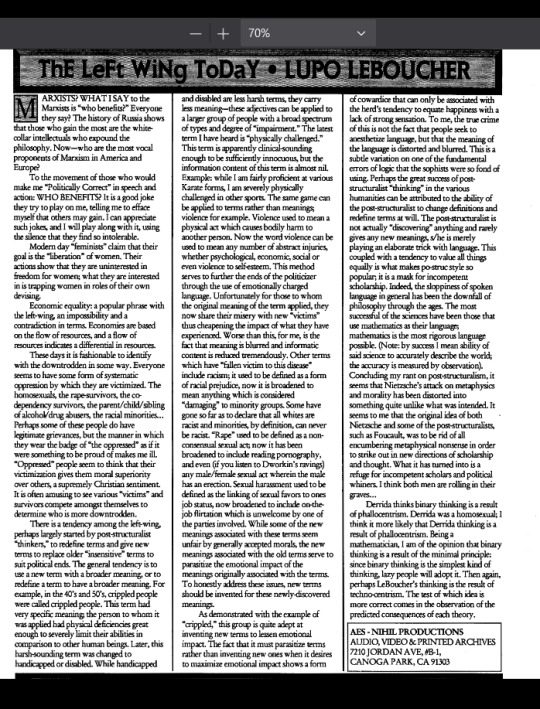







^that last one's from an interview with Lavey himself
and to bring things back around, here's another interview with Boyd Rice:
youtube
on the whole, while the CoS may present itself as an opponent of right-wing christianity, it's ultimately just controlled opposition, pushing largely the same right-wing agenda that the christian right was. it's funny that people never seemed to ask why christian conservatives like Bob Larson were always spending time interviewing, or being interviewed by, the Church of Satan if they were supposedly such mortal enemies.
173 notes
·
View notes
Text
seeking advice if you have experience with cannabis cessation, addiction recovery, substance use disorder, and/or mental health issues, specifically depression, anxiety, and/or borderline personality disorder
tldr; I have to quit cannabis and i'm having a hard time because of my mental health symptoms, specifically being irritable as fuck and i need help/advice on how to get a handle on that
even if you don't have any advice for me, please reblog
background info:
so i've been diagnosed with major depressive disorder (highly treatment resistant), generalized anxiety disorder, and borderline personality disorder.
for the past several years, i've been using cannabis quite effectively to combat the various symptoms of my mental health diagnoses. but in my state, you can't get a medical marijuana card for mental health diagnoses.
i'm starting a trade training program soon, and it's free, and part of the requirement is to be drug-free, including cannabis, since it's still federally illegal. it's not like a "fail-once-you're-out" kind of thing (for cannabis), it's that over a series of drug tests, your levels have to start going down, and they want you clean by the 3rd week of the program.
the program starts at the beginning of september. i've had one drug test at orientation that I definitely failed, but i've been reducing my intake dramatically. used to smoke several bowls a day and in the course of a month, i've gotten myself off of flower entirely. i hit a concentrate pen a couple times a day, and i'm weaning myself off of that too.
lucky for me the withdrawal symptoms from cannabis are basically the mental health symptoms i use cannabis to combat
the difficulty:
i've definitely been feeling the effects of lessening my intake. the anxiety hasn't been too much of an issue but the depression is creeping in. however. i have lived in the pit of depression and anxiety for so long that that stuff doesn't even worry me any more. i'll be able to deal with that okay. i've also come too fucking far with my mental health to give up now, depression is a weak bitch and i've grown strong.

what i'm struggling with is a particular symptom of the BPD. overreactive emotions, particularly irritation. i get irritated by. the littlest things.
like if someone's rude to me (or if i perceive it that way). or if someone's going under the speed limit. or when they stock the shelves too full at the store and stuff falls on me while i'm working. or not getting enough sleep. when someone in the apartment parking lot thinks the "no back-in parking" rule doesn't apply to them. the AC being broken in my car, during our fucking 90 degree summer. little stuff.
it sticks into my brain like a metaphorical porcupine spine and it lives there the rest of the day. and by the end of the day i have like 85 porcupine spines in my brain and i'm ready to lose my shit. it feels, in a way, like my brain is on fire - raw and exposed and vulnerable and like the tiniest thing is going to make it melt entirely.
this is going to sound like an overreaction (but hey that's BPD for you) but i feel like the world has been designed to be sandpaper against my brain, and i'm not allowed to show any signs of discomfort. i am doing my best to put into words how fucking uncomfortable it is for me to live like this, and the words do not feel like enough.
being 100% sober from cannabis is actual hell for me, because the cannabis is the only thing i've been able to find that calms that rage, the irritation, the frustration. it lets the porcupine spines slide out. it puts out the flame and puts a balm on the raw, sandpapered embodiment of my resilience.
this morning i had a tough morning. slept terribly, woke up sweaty and cold, had the worst headache of my life last night. the meat we set out (in the fridge) to thaw for the crockpot didn't thaw. went to work exhausted. aforementioned overstocked-things-fall-on-me. scanner shits out 45 minutes into my day. customers asking me for things when i clearly am not an actual store employee. that's like 8 porcupine spines by 9 am. by the time i had my break, i was overwhelmed, totally pissed off, totally irritated, just rage-swirling in my brain. on my break, i took a hearty puff from my concentrate pen. and then. i was fine. for pretty much the rest of the day. like irritations still came up but they didn't stick like they did before, they rolled off much easier. because that's what cannabis does for me.
but i don't get to use cannabis to de-rage anymore. and that's the problem.
the advice/help i need:
suggestions for handling irritation in the moment so it doesn't get to the point of being overwhelming, therapy tricks, etc
suggestions on anything natural i can take or introduce into my diet that will help with the withdrawal
suggestions on how to avoid going back to cannabis (and therefore blowing my chance for this program)
basically any anger management suggestions
i really ought to get back into therapy, but since i'm not working while i'm taking the class, i can't super afford therapy right now
this is a sincere plea. most people think i'm a really nice person and they don't realize that it's because i'm on at least a little bit of cannabis almost all the time. without it, i'm such a bitch, and not because i want to be a bitch but because i feel like my brain is getting clawed to pieces and i just react, because, BPD.
anything you've got. help. please.
#personal#addiction recovery#borderline personality disorder#cannabis#weed#mental health#smoking cessation
24 notes
·
View notes
Text
Losing my mind at how Big Tobacco kept it secret for years that smoking causes cancer
And then how when everyone else finally found out bc everyone was like “wtf why are all these people in their 60s dying of lung cancer,” they got away with no penalties except having to put warning labels on their products and all tobacco taxes and higher insurance premiums fell on the consumers they’d deliberately gotten addicted to their cancer sticks as in they spent billions of dollars of advertising worldwide to get people hooked
And then just when it was starting to look like public health was about to win the war on smoking, they rolled out vapes and used the exact same playbook they had with cigarettes, as in they knew their products were dangerous and they lied that they were safe and heavily marketed their toxic lung destroyers to kids. And they’ve STILL faced no penalties. The companies didn’t get nationalized and forced to only make the least dangerous products possible that could still contain nicotine and that looked like unappealing medical devices. Nobody’s gone to prison. No company or individual has paid a single significant fine. They haven’t even had to settle a serious lawsuit.
I cannot stress how uncool smoking had gotten by 2010, around when the first commercially successful vapes hit the market. I knew so few people my age who smoked that I could count them on one hand. Nobody in the honors/AP program smoked. Smoking was seen by the vast majority of teenagers as something nasty and smelly and seriously stupid and uncool that maybe your parents or grandparents did, as old people stuff like being bad at computers or buying single-ply toilet paper.
The public health campaigns and the warning labels and the posters in the pediatricians’ offices had worked. It was all set up to be the greatest public health victory since routine childhood vaccination. The public health people were already doing victory laps. But, like a bacterium that discovers how to resist an antibiotic, Big Tobacco developed a new addictive product and a new marketing strategy.
Vapes weren’t marketed very much to adult smokers, not at first. Like, the first couple products did that, and also tried to look as close to real cigarettes as possible, but adult smokers were primarily older, suspicious of new tech, knew Big Tobacco had knowingly gotten them hooked on an unsafe product before and didn’t trust them, and probably most saliently, other nicotine replacement products like gums and patches, plus a couple of meds that make the cravings less bad or something, already existed.
No, the first effective vape marketing focused on kids. This was legal because all the laws focused on tobacco leaf products; you had to be 18 to buy tobacco replacement products, but ones that are approved by the FDA have to be unappealing to tobacco-naive consumers.
From everything I’ve heard, nicotine gum tastes terrible, and it it’s packaged like medicine (I found some at a relative’s house when I was a kid, and it was about as appealing to children as prescription antibiotics pills, in fact less so because it wasn’t colored). Because nicotine patches are FDA approved, it’s illegal to make ones that look like cute stickers that middle school children would love.
Big Tobacco realized that this was a problem, and decided to forgo FDA approval as a smoking cessation device, even while positioning to regulators and the adult public that it was one and the FDA just had too much red tape, and marketed vapes heavily to children. They designed vape pens to look like school supplies and cell phone power banks instead of like cigarettes. They marketed them to the kids who were in middle school and late elementary in 2010. They marketed them as a legal high, fun flavors, told them the vapor clouds were cool like skateboard tricks, and perhaps most importantly, sold vapes as something that was different from smoking and also as safe as chewing gum.
By 2014, per the CDC, vapes were the most used tobacco product among US adolescents. By 2016, when I graduated college, vapes were already not an uncommon sight in bars, though most people preferred cigs in the few bars that allowed smoking; by the time I started going back to bars after the pandemic became less dangerous, every fourth or fifth person was sucking on a vape.
The kids who were toddlers in 2010 are in high school now. Per data from 2022, 14.1% of them vape. That doesn’t sound like a lot, but put it this way: in a typical class size of 30, there’s 4-5 kids who vape either socially or habitually and are willing to admit it to federal researchers despite it being illegal for people their age to vape; that means there’s 2-3 more at minimum who won’t admit it, and likely several more who will take a puff if someone offers one in the school restroom or at a party, but who don’t currently have the money to develop a proper habit; most of those will get addicted within weeks of becoming old enough to get a work permit or their first college work-study, not to mention also becoming old enough to buy vapes at a store instead of from a dealer. That’s nearly half the class! The kids know it’s unhealthy, but they think it’s like ice cream is unhealthy, not the way shooting up a cocktail of meth and tranq dope with a dirty needle is unhealthy.
Capitalism literally causes cancer. The vapes weren’t safe; they cause heart attacks, strokes, and horrifying lung damage. They cause them far sooner than cigarettes do. We don’t know anything about the cancer risk yet, but I suspect that will show up in another 10 to 20 years, and that it may be different from and/or more virulent than cancers caused by traditional tobacco products. Or it may be fewer cancers but weirder ones. We simply don’t have the data yet.
Big Tobacco got another generation hooked on a killer, and capitalism let it. The execs are still eating $500 meals at Michelin-star restaurants instead of prison food. We should change that.
11 notes
·
View notes
Text
Cancer Prevention Tips: Lifestyle Changes for Reducing Risk

Introduction:
Cancer is a complex disease influenced by a variety of factors, including genetics and environmental exposures. While not all cancers can be prevented, adopting certain lifestyle changes can significantly reduce your risk of developing cancer. In this blog, we will explore important cancer prevention tips that can empower you to make proactive choices for a healthier life.
1. Quit Smoking:
Tobacco use is one of the leading causes of preventable cancers. Quitting smoking and avoiding exposure to secondhand smoke can dramatically reduce your risk of lung, throat, mouth, and other types of cancers. Seek support from healthcare professionals, join cessation programs, and utilise nicotine replacement therapies to help you quit smoking successfully.
2. Maintain a Healthy Weight:
Excess body weight, particularly obesity, is linked to an increased risk of several cancers, including breast, colorectal, pancreatic, and kidney cancers. Adopting a healthy eating plan that includes a variety of fruits, vegetables, whole grains, and lean proteins, along with regular physical activity, can help you achieve and maintain a healthy weight.
3. Follow a Balanced Diet:
A nutritious diet rich in fruits, vegetables, and whole grains provides essential vitamins, minerals, and antioxidants that can help reduce cancer risk. Limit consumption of processed and red meats, high-sugar foods, and beverages. Instead, opt for a diet that is predominantly plant-based, including plenty of fibre, while minimising processed and sugary foods.
4. Stay Active:
Engaging in regular physical activity can lower the risk of various cancers, including breast, colorectal, and endometrial cancers. Strive for at least 150 minutes of moderate-intensity exercise or 75 minutes of vigorous-intensity exercise per week. Incorporate activities you enjoy, such as walking, swimming, cycling, or dancing, to make it a sustainable part of your lifestyle.
5. Protect Your Skin:
UV radiation from the sun and tanning beds is a significant risk factor for skin cancer. Protect your skin by seeking shade, wearing protective clothing, using sunscreen with a high SPF, and avoiding indoor tanning. Regularly examine your skin for any changes, such as new moles or growths, and consult a dermatologist if you notice anything suspicious.
6. Limit Alcohol Consumption:
Excessive alcohol consumption is associated with an increased risk of several cancers, including those of the mouth, throat, liver, and breast. If you choose to drink, do so in moderation. The recommended limits are up to one drink per day for women and up to two drinks per day for men.
Conclusion:
By incorporating these cancer prevention tips into your daily life, you can significantly reduce your risk of developing various types of cancers. Remember that small changes can make a big difference. Quitting smoking, maintaining a healthy weight, following a balanced diet, staying physically active, protecting your skin, and moderating alcohol consumption are essential steps towards reducing your cancer risk.
In addition to these lifestyle changes, it's important to stay up to date with recommended cancer screenings and seek regular medical check-ups. Early detection plays a crucial role in successful cancer management.
Empower yourself with knowledge and take charge of your health. By making informed choices and adopting a healthy lifestyle, you can actively reduce your risk of cancer and promote overall well-being. Your actions today can pave the way for a healthier and cancer-free future.
For more details click on the link 👇🏻
https://bit.ly/3osreVo
#HopeAgainstCancer#ICANWIN#YESITSRAM#FightAgainstCancer#CancerAwarenessMatters#TogetherAgainstCancer#CancerWarriorsUnite#EmpoweredByHope#RaisingCancerAwareness#IgniteTheFight#ConquerCancerTogether#InspireHopeForSurvivors#CancerFreeFuture#CancerAwareness#CancerSupport#CancerSurvivor#CancerFighter#CancerCommunity#CancerResearch#CancerPrevention#CancerFree#EndCancer#StandUpToCancer#CancerJourney#CancerWarrior#CancerAware#CancerThrive#NoOneFightsAlone
46 notes
·
View notes
Text
Smoking Cessation Program
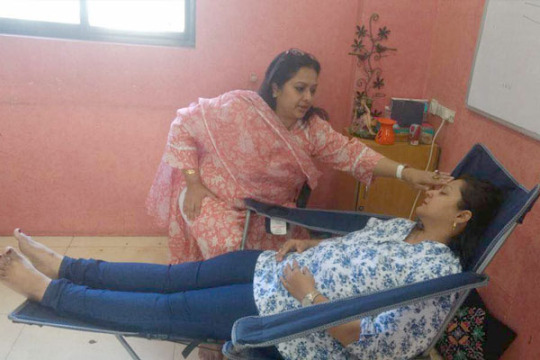
Hypnotherapy is a remarkable partnership between the client and the hypnotherapist. The client communicates their objectives to the therapist, who subsequently guides (or induces) the client into a state of hypnosis. Smoking Cessation Programs
0 notes
Text
14 Common Lung Diseases
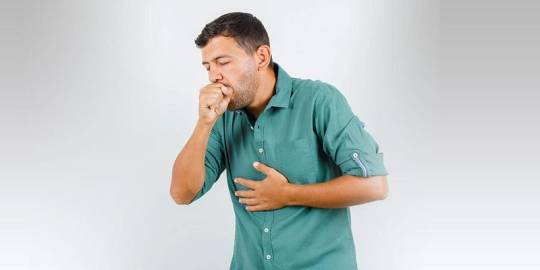
Introduction
Lung diseases represent some of the most severe health threats globally. The rise of industrialization, environmental pollution, and tobacco usage significantly contribute to the prevalence of these diseases. This article, outlines the most common lung diseases, their symptoms, causes, and treatments.
1. Pneumonia
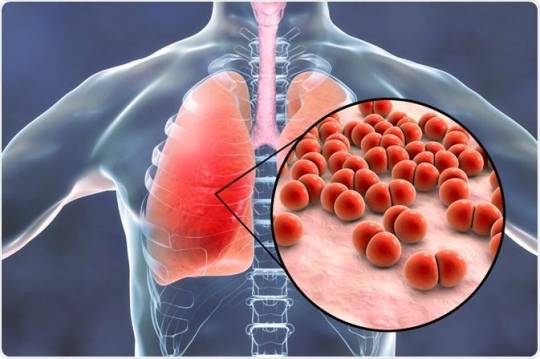
Pneumonia is an inflammation of the lung parenchyma caused by bacteria, viruses, fungi, or other pathogens. It poses a significant risk to the elderly, immunocompromised individuals, and those with chronic conditions but can also affect healthy individuals. Pneumonia can be classified based on the causative agent, such as bacterial pneumonia (e.g., Streptococcus pneumoniae), viral pneumonia (e.g., influenza virus), or fungal pneumonia (e.g., Pneumocystis jirovecii).
Symptoms
Fever
Cough with sputum
Chest pain
Shortness of breath
Fatigue
Sweating and shaking chills
Nausea, vomiting, or diarrhea (less common)
Diagnosis
Diagnosis of pneumonia typically involves a combination of patient history, physical examination, chest X-rays, and sputum cultures. Blood tests may also be conducted to identify the causative agent.
Treatment
Depending on the cause, treatments may include:
Antibiotics for bacterial pneumonia.
Antiviral medications for viral pneumonia.
Antifungal therapies for fungal pneumonia. Supportive care such as rest, fluids, and over-the-counter medications to reduce fever and manage pain can also alleviate symptoms. In severe cases, hospitalization may be required to provide intravenous antibiotics, oxygen therapy, or mechanical ventilation.
2. Bronchitis

Bronchitis involves the inflammation of the bronchial tubes, which carry air to and from the lungs. It can be acute, often following colds or the flu, or chronic, usually resulting from smoking or long-term exposure to irritants like pollution or dust.
Symptoms
Persistent cough (productive or dry)
Sputum production (clear, white, yellowish-gray, or green)
Fatigue
Shortness of breath
Slight fever and chills
Chest discomfort
Diagnosis
Diagnosis typically involves a physical examination, where a doctor listens to the patient’s lungs with a stethoscope. Additional tests, such as a chest X-ray, sputum tests, or pulmonary function tests, may be conducted to rule out other conditions like pneumonia or asthma.
Treatment
Acute bronchitis: Symptomatic treatment includes rest, fluids, and over-the-counter pain relievers and cough medications. Inhalers or nebulizers may be prescribed to ease breathing.
Chronic bronchitis: Management may involve bronchodilators, steroids, and pulmonary rehabilitation. Smoking cessation and avoiding lung irritants are crucial for treatment.
3. Chronic Obstructive Pulmonary Disease (COPD)
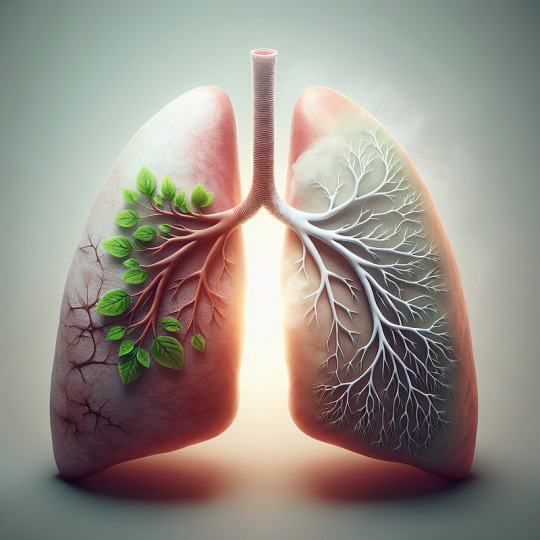
COPD is a progressive, irreversible disease characterized by chronic inflammation of the airways, primarily due to smoking, environmental pollutants, or long-term exposure to respiratory irritants. COPD includes chronic bronchitis and emphysema, conditions that often coexist and lead to airflow obstruction.
Symptoms
Chronic cough
Sputum production
Shortness of breath, especially during physical activities
Wheezing
Chest tightness
Frequent respiratory infections
Fatigue
Unintended weight loss (in advanced stages)
Diagnosis
COPD is diagnosed through a combination of patient history, physical examination, and spirometry, a test that measures the amount of air a person can exhale and how quickly they can do so. Chest X-rays, CT scans, and arterial blood gas analysis may also be used.
Prevention and Treatment
Preventive measures include:
Smoking cessation
Vaccinations (influenza and pneumococcal vaccines)
Reducing exposure to lung irritants
Treatments involves;
Bronchodilators to relax the muscles around the airways
Inhaled steroids to reduce airway inflammation
Pulmonary rehabilitation programs
Oxygen therapy for severe cases
Surgery (e.g., lung volume reduction surgery or lung transplant) in advanced cases
4. Lung Cancer

Lung cancer involves the uncontrolled growth of malignant cells in the lung tissues. Major risk factors include smoking, exposure to secondhand smoke, exposure to carcinogens (e.g., asbestos, radon), and genetic predisposition.
Types
Small cell lung cancer (SCLC): Often linked to heavy smoking, SCLC is aggressive and spreads quickly.
Non-small cell lung cancer (NSCLC): More common and includes subtypes such as adenocarcinoma, squamous cell carcinoma, and large cell carcinoma.
Symptoms
Persistent cough
Chest pain
Weight loss
Hemoptysis (coughing up blood)
Shortness of breath
Hoarseness
Bone pain (in advanced stages)
Headache (if cancer spreads to the brain)
Diagnosis
Diagnosis involves imaging tests (chest X-rays, CT scans, PET scans), sputum cytology, and tissue biopsy. Molecular testing may be done to identify specific genetic mutations that can be targeted with specific treatments.
Treatment
Surgery to remove the tumor or part of the lung
Chemotherapy to kill cancer cells
Radiation therapy to destroy cancer cells or shrink tumors
Targeted drug therapies to attack specific genetic changes in cancer cells
Immunotherapy to help the immune system fight cancer
5. Pleurisy
Pleurisy, or pleuritis, is the inflammation of the pleura, the tissue lining the lungs and chest cavity. It can be caused by infections (viral, bacterial, or fungal), injuries, autoimmune diseases (e.g., lupus, rheumatoid arthritis), or other underlying conditions.
Symptoms
Sharp, stabbing chest pain that worsens with breathing, coughing, or sneezing
Shortness of breath
Cough
Fever (if infection is present)
Diagnosis
Diagnosis involves a physical examination, chest X-rays, ultrasound, CT scans, and blood tests to identify the underlying cause. Thoracentesis, a procedure to remove and analyze pleural fluid, may be performed.
Treatment
Treatment depends on the underlying cause and may include:
Antibiotics for bacterial infections
Antiviral medications for viral infections
Anti-inflammatory medications (e.g., NSAIDs) to reduce pain and inflammation
Pain management with medications
Thoracentesis to drain excess fluid from the pleural space
6. Pulmonary Embolism
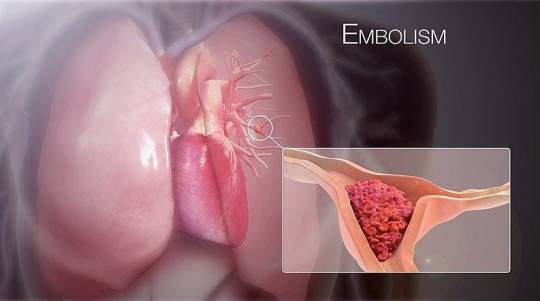
A pulmonary embolism (PE) occurs when a blood clot, usually originating in the legs (deep vein thrombosis), travels to the lungs, blocking blood flow and causing tissue damage. Risk factors include prolonged immobility, surgery, cancer, and certain genetic conditions.
Symptoms
Sudden shortness of breath
Chest pain (may be sharp and worsen with deep breathing or coughing)
Cough (sometimes with bloody sputum)
Rapid or irregular heartbeat
Lightheadedness or dizziness
Leg pain or swelling (if DVT is present)
Diagnosis:
Diagnosis involves imaging tests such as chest X-rays, CT pulmonary angiography, and ventilation-perfusion (V/Q) scans. D-dimer blood tests and ultrasound of the legs may also be conducted.
Treatment
Immediate treatment includes:
Anticoagulants (blood thinners) to prevent further clotting
Thrombolytics (clot-dissolving medications) for severe cases
Surgical or catheter-based procedures to remove the clot
Long-term anticoagulation therapy to prevent recurrence
7. Pulmonary Edema
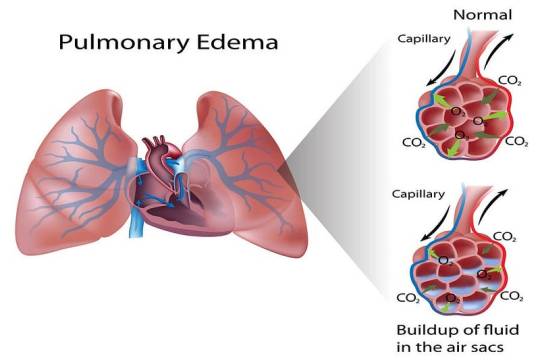
Pulmonary edema is the accumulation of fluid in the lung alveoli, making breathing difficult. It can result from heart failure (cardiogenic pulmonary edema), acute respiratory distress syndrome (ARDS), or exposure to high altitudes (non-cardiogenic pulmonary edema).
Symptoms
Difficulty breathing (dyspnea), especially when lying down
Rapid heartbeat (tachycardia)
Wheezing or gasping for breath
Coughing up frothy, pink-tinged sputum
Excessive sweating
Cyanosis (bluish skin or lips)
Diagnosis
Diagnosis involves physical examination, chest X-rays, and blood tests. Echocardiography and pulmonary artery catheterization may be used to determine the underlying cause and severity.
Treatment
Treatment involves addressing the underlying cause and may include:
Diuretics to remove excess fluid
Medications to improve heart function (for cardiogenic pulmonary edema)
Supplemental oxygen or mechanical ventilation
Treating underlying conditions such as infections or high altitude exposure
8. Pulmonary Fibrosis
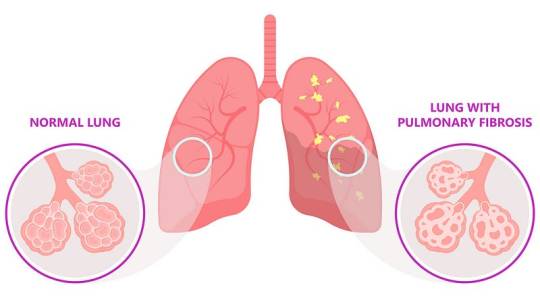
Pulmonary fibrosis is the thickening and scarring of lung tissue, leading to reduced oxygen absorption. Causes include chronic exposure to environmental pollutants, infections, genetic factors, and autoimmune diseases (e.g., scleroderma).
Symptoms
Shortness of breath (dyspnea)
Persistent dry cough
Fatigue
Unexplained weight loss
Aching muscles and joints
Clubbing (widening and rounding) of the fingertips or toes
Diagnosis
Diagnosis involves a combination of patient history, physical examination, imaging tests (chest X-rays, high-resolution CT scans), pulmonary function tests, and sometimes lung biopsy. Blood tests may be used to identify underlying autoimmune diseases.
Treatment
While there is no cure for pulmonary fibrosis, treatments focus on symptom management and slowing progression:
Medications such as pirfenidone and nintedanib to slow disease progression
Oxygen therapy
Pulmonary rehabilitation
Lung transplant in severe cases
9. Pneumoconiosis
Pneumoconiosis is a lung disease caused by inhaling dust particles, such as asbestos, silica, or coal dust, leading to lung scarring. It is a type of occupational lung disease commonly seen in miners, construction workers, and industrial workers.
Symptoms:
Chronic cough
Shortness of breath
Chest tightness
Progressive loss of lung function
Diagnosis:
Diagnosis involves a detailed occupational history, physical examination, chest X-rays, and CT scans. Pulmonary function tests may also be conducted to assess the extent of lung damage.
Treatment
Treatment includes:
Avoiding further exposure to dust
Medications to manage symptoms, such as bronchodilators and corticosteroids
Respiratory therapies
Pulmonary rehabilitation
10. Pulmonary Arterial Hypertension (PAH)
PAH is a form of high blood pressure affecting the arteries in the lungs and the right side of the heart. It can be idiopathic, familial, or associated with other conditions such as connective tissue diseases, congenital heart disease, or chronic liver disease.
Symptoms
Breathing difficulties (dyspnea), especially during physical activities
Dizziness or fainting (syncope)
Chest pain
Fatigue
Swelling in the ankles, legs, and abdomen (edema)
Cyanosis (bluish lips and skin)
Diagnosis
Diagnosis involves echocardiography, right heart catheterization, chest X-rays, and CT scans. Blood tests and pulmonary function tests may also be conducted to assess lung and heart function.
Treatment
Treatment strategies include:
Medications to relax blood vessels and improve blood flow, such as endothelin receptor antagonists, phosphodiesterase-5 inhibitors, and prostacyclin analogs
Diuretics to reduce fluid retention
Oxygen therapy
Anticoagulants to prevent blood clots
In severe cases, surgical procedures such as atrial septostomy or lung transplant
11. Cystic Fibrosis
Cystic fibrosis (CF) is a genetic disorder caused by mutations in the CFTR gene, leading to thick, sticky mucus buildup in the lungs and other organs. This results in frequent infections, respiratory issues, and digestive problems.
Symptoms
Persistent cough with thick mucus
Recurrent lung infections
Wheezing or shortness of breath
Poor growth and weight gain in children
Salty-tasting skin
Severe constipation
Frequent greasy, bulky stools
Diagnosis
Diagnosis involves genetic testing, sweat chloride tests, and newborn screening. Pulmonary function tests, chest X-rays, and sputum cultures may also be conducted to assess lung health.
Treatment
Management includes:
Medications to thin mucus, antibiotics to treat infections, and bronchodilators to open airways
Chest physiotherapy to clear mucus
Enzyme supplements and high-calorie diets to manage digestive issues
Newer therapies targeting the underlying genetic defect, such as CFTR modulators
12. Respiratory Distress Syndrome (RDS)
RDS primarily affects premature infants due to a lack of surfactant, a substance necessary to keep the lungs open and facilitate gas exchange. Risk factors include premature birth, maternal diabetes, and multiple births.
Symptoms
Rapid, shallow breathing
Grunting sounds while breathing
Nasal flaring
Chest retractions (pulling in of the chest muscles)
Cyanosis (bluish color of the skin and mucous membranes)
Diagnosis
Diagnosis involves clinical assessment, chest X-rays, and blood gas analysis to measure oxygen and carbon dioxide levels. Prenatal tests can also help identify at-risk pregnancies.
Treatment
Treatment includes:
Surfactant replacement therapy to improve lung function
Mechanical ventilation or continuous positive airway pressure (CPAP) to support breathing
Oxygen therapy
Supportive care such as fluids and nutrition
13. Sarcoidosis
Sarcoidosis is characterized by the growth of granulomas (small clusters of inflammatory cells) in the lungs and other organs, likely as an immune response to unknown triggers. The exact cause remains unclear, but genetic and environmental factors are believed to play a role.
Symptoms
Dry cough
Shortness of breath
Chest pain
Fatigue
Fever
Swollen lymph nodes
Skin lesions (e.g., erythema nodosum)
Diagnosis
Diagnosis involves a combination of patient history, physical examination, chest X-rays, CT scans, and pulmonary function tests. Biopsy of affected tissues may be performed to confirm the presence of granulomas.
Treatment
While sarcoidosis is often self-limiting and may resolve without treatment, severe cases may require:
Corticosteroids to reduce inflammation
Immunosuppressive medications (e.g., methotrexate, azathioprine)
Antimalarial drugs (e.g., hydroxychloroquine) for skin lesions
Regular monitoring and follow-up care to manage chronic cases
14. Asthma

Definition and Causes:
Asthma is a chronic inflammatory condition of the airways, causing episodes of wheezing, coughing, and chest tightness, often triggered by allergens, exercise, cold air, or respiratory infections. Genetic and environmental factors contribute to its development.
Symptoms
Wheezing
Shortness of breath
Chest tightness
Coughing, especially at night or early morning
Increased mucus production
Diagnosis:
Diagnosis involves a detailed medical history, physical examination, and lung function tests (spirometry, peak flow measurement). Allergy testing and chest X-rays may also be conducted to identify triggers and rule out other conditions.
Treatment
Management includes:
Avoiding known triggers
Inhalers (bronchodilators for quick relief, corticosteroids for long-term control)
Long-term control medications (e.g., leukotriene modifiers, long-acting beta agonists)
Immunotherapy (allergy shots) for severe allergies
Asthma action plans to manage symptoms and prevent attacks
Conclusion
Lung diseases encompass a wide range of conditions, each with distinct causes, symptoms, and treatments. Preventive measures such as avoiding smoking, reducing exposure to environmental pollutants, and timely vaccinations can significantly reduce the risk of developing many of these diseases. Early diagnosis and appropriate management are crucial in improving outcomes and quality of life for individuals affected by lung diseases. For personalized medical advice and treatment, consult with healthcare professionals.
Medical students encounter significant academic challenges during their studies, balancing coursework, clinical rotations, research, and personal commitments. Expert Academic Assignment Help offers tailored assistance to meet their needs, providing study materials, tutoring, assignment help, and exam preparation. Beyond academics, it fosters a supportive environment for mentorship and guidance. In essence, Expert Academic Assignment Help is a valuable resource for medical students, empowering them to excel academically and develop into competent healthcare professionals. Email us: [email protected] for professional guidance.
#medical students#nursing school#nursing student#assignment help#medicine#medical university#medical school#medical student#studying#studyspo#student#student life#college student#study inspiration#study blog#academic writing#writters on tumblr#online writing#do my online class
4 notes
·
View notes
Text
I have seen a lot of info about things that libraries provide, and may I add: health departments!
I honestly had no idea until I started working at one, but they are so much more than inspections and disease investigation!
You need primary care? A lot of them have clinics that take insturance and/or do sliding scale payment
You need a dentist? A lot of them also offer dental services too
Have a kid? Car seat installation, childhood vaccines, WIC, support for paying for childhood healthcare, breastfeeding support, newborn and early intervention home visits, safety town days, and healthy eating classes for kids. Some even do free books, toys, even coats and car seats!
Have a house? Carbon monoxide and smoke detector checks (or get them for free), lead testing, radon testing
Are you a human? Healthy eating/cooking classes, chronic illness support groups, bereavement support groups, access to social workers to access programs outside of the department, communicable disease reporting, mosquito abatement, monitoring and investigation of outbreaks, monitoring of food and healthcare providers, community programs, smoking and vaping cessation, emergency preparedness, adult and travel immunization/prevention, health site services, HIV testing, birth and death records, general health information, and so much more!
Also it’s free or super low cost.
48 notes
·
View notes